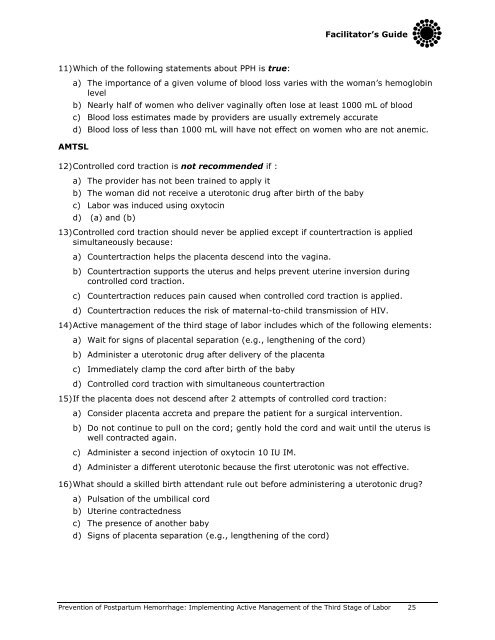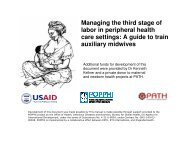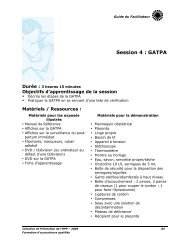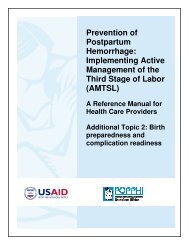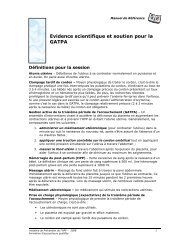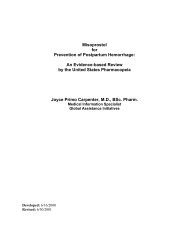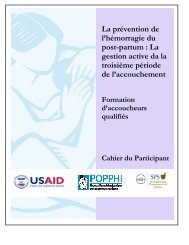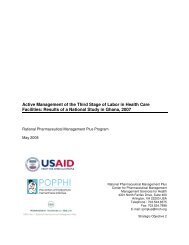Prevention of Postpartum Hemorrhage: Implementing ... - POPPHI
Prevention of Postpartum Hemorrhage: Implementing ... - POPPHI
Prevention of Postpartum Hemorrhage: Implementing ... - POPPHI
Create successful ePaper yourself
Turn your PDF publications into a flip-book with our unique Google optimized e-Paper software.
Facilitator’s Guide11) Which <strong>of</strong> the following statements about PPH is true:a) The importance <strong>of</strong> a given volume <strong>of</strong> blood loss varies with the woman’s hemoglobinlevelb) Nearly half <strong>of</strong> women who deliver vaginally <strong>of</strong>ten lose at least 1000 mL <strong>of</strong> bloodc) Blood loss estimates made by providers are usually extremely accurated) Blood loss <strong>of</strong> less than 1000 mL will have not effect on women who are not anemic.AMTSL12) Controlled cord traction is not recommended if :a) The provider has not been trained to apply itb) The woman did not receive a uterotonic drug after birth <strong>of</strong> the babyc) Labor was induced using oxytocind) (a) and (b)13) Controlled cord traction should never be applied except if countertraction is appliedsimultaneously because:a) Countertraction helps the placenta descend into the vagina.b) Countertraction supports the uterus and helps prevent uterine inversion duringcontrolled cord traction.c) Countertraction reduces pain caused when controlled cord traction is applied.d) Countertraction reduces the risk <strong>of</strong> maternal-to-child transmission <strong>of</strong> HIV.14) Active management <strong>of</strong> the third stage <strong>of</strong> labor includes which <strong>of</strong> the following elements:a) Wait for signs <strong>of</strong> placental separation (e.g., lengthening <strong>of</strong> the cord)b) Administer a uterotonic drug after delivery <strong>of</strong> the placentac) Immediately clamp the cord after birth <strong>of</strong> the babyd) Controlled cord traction with simultaneous countertraction15) If the placenta does not descend after 2 attempts <strong>of</strong> controlled cord traction:a) Consider placenta accreta and prepare the patient for a surgical intervention.b) Do not continue to pull on the cord; gently hold the cord and wait until the uterus iswell contracted again.c) Administer a second injection <strong>of</strong> oxytocin 10 IU IM.d) Administer a different uterotonic because the first uterotonic was not effective.16) What should a skilled birth attendant rule out before administering a uterotonic drug?a) Pulsation <strong>of</strong> the umbilical cordb) Uterine contractednessc) The presence <strong>of</strong> another babyd) Signs <strong>of</strong> placenta separation (e.g., lengthening <strong>of</strong> the cord)<strong>Prevention</strong> <strong>of</strong> <strong>Postpartum</strong> <strong>Hemorrhage</strong>: <strong>Implementing</strong> Active Management <strong>of</strong> the Third Stage <strong>of</strong> Labor 25


